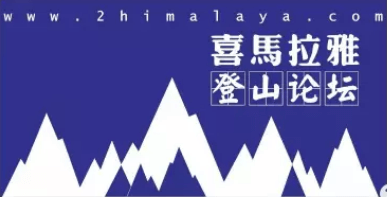General
Pakora Pass Trek (2024-25)
Pakora Pass Trek is one of the trending adventures at Apricot Tours. At 4710 meters, the Pakora Pass makes an appealing starting point for anyone interested in learning more about Karakoram trekking. This path connects the Naltar Gah and Pakora Gol valleys, offering a mesmerizing blend of alpine meadows, a little glacier, a moderately high pass, and stunning views. Given below are the details of this trek.
Dates & Cost – Pakora Pass Trek – (14 Days)
Summers are ideal for the Pakora Pass trek. The start and end dates in the table below are your dates of arrival and departure from Pakistan. The months mentioned below are the ideal months for trekking in the Karakoram region of Pakistan. We have guaranteed departures every year. Our dates and costs for the Pakora Pass trek are given below.
| Start Dates | End Dates | Price (USD) | Availability | Deposit | Registration |
|---|---|---|---|---|---|
| 20-Jun-2024 | 03-Jul-2024 | US$ 1,800 | Limited Space | US$ 260 | BOOK NOW |
| 20-Jun-2025 | 03-Jul-2025 | US$ 1,900 | Available | US$ 260 | BOOK NOW |
| Start Dates | End Dates | Price (USD) | Availability | Deposit | Registration |
Holiday Information
- Licensed professional guide (government requirement)
- Airport transfers on the first and last day
- All road transport in Pakistan
- Hotel accommodation in Pakistan (twin sharing rooms)
- Trekking accommodation in Pakistan (twin sharing tents)
- Hotel meals in Pakistan (breakfast, lunch and dinner)
- Trekking meals in Pakistan (breakfast, lunch and dinner)
- Trekking logistics (tents, non-personal equipments and tools)
- Support staff (cook, assistant(s) etc)
- Porters for trekking equipments, kitchen (supplies, tools, equipments, crockery, gas) and personal luggage
- Travel Insurance (recommendations only)
- Visa to Pakistan (supporting documents offered)
- International airfare
- Personal equipments (list provided on registration or request)
- Tips for guides, porters, staff etc
- Miscellaneous (drinks, phone calls, laundry, souvenir etc)
Highlights – Pakora Pass Trek
Pakora Pass Trek has a lot to offer. Given below are the main highlights of the Pakora Pass Trek.
- Alpine meadows, glaciers, and breathtaking views.
- Adventure as Steep climbs, rugged terrain, and glacier crossings
- Spectacular vistas of Shani and Sentinel peaks.
- Extended Options combine with adjacent passes for longer treks.
- Thrilling adventure in Pakistan's Karakoram region
- Meet mountaineers at base camps
- Sightseeing in Skardu and Islamabad
Itinerary – Pakora Pass Trek
The itinerary for Pakora Pass Trek is given below.
Day 02: Drive to Besham
After breakfast, leave for Besham. We'll make a stop at Chatar for photos and lunch. Stay at a hotel for the night.
Day 03: Drive to Gilgit from Besham
After breakfast, travel 9-10 hours to Gilgit, stopping along the way at the "Junction Point of World Great Mountain Ranges" Himalaya, Karakorum, and Hindukush, as well as the Killer Mountain "Nanga Parbat" viewpoint. O/N Stay in the hotel.
Day 04: Drive to Naltar
Prepare for an exquisite trip to Nalter, a pastureland, winter ski resort, and tourist destination with stunning vistas. Set up camp amidst nature's splendour and immerse yourself in the peace of the surroundings.
Day 05: Upper Naltar to Naltar Lake
Walk up the true left (east) side of Naltar Gah from Upper Naltar (2820m), also known as Dumian. Ford a side brook at the start of Beshgiri, the Shina word for the distinctive red lichen-covered (besh) stones (giri) east of the trail, in 134 hours. A two-day journey across the valley from Beshgiri takes you southwest through a glaciated pass beneath Khaltar Peak (5591m) and down the Bichhar Gah to Sherqila in Punial.
Beyond Beshgiri, you'll pass through a lovely cedar, chir pine, and birch forest. In 45 minutes, cross another side stream to reach Bangla, which is called for a local 'bungalow'. Cross a footbridge to the actual right (west) bank of the Naltar Gah. Continue for 45 minutes to the road's end and the first lake, Naltar Lake (3270m), as well as the Lake View Hotel, which consists of a food preparation hut and a huge canvas tent with blankets for sleeping.
Day 06: Naltar Lake to Lower Shani
Skirt the lake and, in 15 minutes, cross a footbridge to the actual left (east) side of the Naltar Gah. Two more lakes arise up the western side Valley after a little elevation, and the river ahead coils out. Cross the Shing region in 45 minutes by going down the river bed and fording a big side stream flowing from the east. The Gujar village of Gupa is located along the river's true right (west) side, where it narrows. The settlement is accessible via footbridges above and below Gupa, but the main trail keeps to the true left (east) side. After an hour, cross a large side stream from the east to reach the glaciated Chaprot Pass that connects Snow Dome (5029m) and Mehrbani (5639m). The hanging glacier on the west side of the pass, as well as a larger one on the east side, make crossing impossible. The huts at Lath, located 15 minutes beyond the stream and high above the river, offer the first view of the Shani Glacier's terminus.
The route becomes faint as it skirts the Shani Glacier's northeast rim, reaching Lower Shani in one to one and a half hours as Pakora Pass comes into view. Shani means 'a pristine location where fairies reside' in Shina, and flowers in meadows like these attract them. Lower Shani (3690m) has a stream and a grassy meadow, as well as herders' cottages near the glacier. Be mindful of the herders' dogs. The formidable Shani summit (5887m), located southwest across the Shani Glacier, is a challenging mixed snow and ice ascent.
Day 07: Lower Shani to Pakora High Camp
The hillside is covered in rhubarb and junipers, and the trail leads past cabins in 45 minutes, signaling the start of Upper Shani. Cross the slope above these cabins and descend fast into the ablation valley. Cross a footbridge right above where the river meets the glacier. Continue your journey above the true left bank because the river is too wide and deep to drive much further up. Walk for 15 minutes along the true right side of the river bed, with the pink and orange granite of the Shani Glacier's lateral moraine on your left. Upper Shani (3797m), located one to one and a half hours from Lower Shani, is well-sheltered by the lateral moraine. If you haven't acclimatized yet, camp here. To get to Pakora High Camp, cross the little side brook and climb the steep, grassy, flower-covered slope where horses and yaks graze. Continue through more challenging terrain until the slope levelled out. Follow the true right bank of the large clear stream for a little way to Pakora High camp (4230m), which is marked by a few destroyed stone shelters and may be reached in one to eleven hours from Upper Shan. In this stunning area, you can also camp just before the stone shelters on either side of the stream.
Day 08: Pakora High Camp to Jut/Uts
A side stream runs from the west behind the high camp, south of a large rock outcrop. An hour later, an unclear trail follows this stream up steep, loose rock, passing a few cairns. There are numerous tiny snowfields on the east side of the pass, as well as a large crevasse-free snowfield directly beneath the peak. In 30 minutes, you'll have crossed the snowfield and arrived at the obvious Pakora Pass (4710 metres). Sentinel (5260m) is a somewhat difficult alpine climb north of the pass.
The Pakora Pass is glaciated on the west side, however crevasses are located lower down. In 15 to 30 minutes, descend across the snowfield, working to the north (right) onto the visible grey lateral moraine. Follow a small path down the lateral moraine for 30 minutes till you reach the Pakora Glacier (gomukh in Shina). In 30 minutes, you'll cross the width of the freezing glacier and head west to reddish rocks.
There are two routes to traverse the glacier. The major trail leads down the valley to Pakora. The other route to Chatorkhand goes across the rarely used, glaciated Hayal Pass. Head west (left) from the west side of the Pakora Glacier, 3km west of and 450m below Pakora Pass at 4230m, then ascend the rock along the Hayal Glacier's north shore. The route is incorrectly shown on the Swiss map as branching off at Pakora Pass. To approach Pakora, walk down the lateral moraine that sits high above the southwest boundary of the Pakora Glacier, which fills the upper valley. Continue for two hours on a narrow track to Lal Patthar (3690m), named in Urdu after the big scarlet boulder among the junipers. Krui Bokht is the name it goes by in Khowar. The rock provides shelter for porters, and there are a few potential tent sites nearby, but the sloping mountain and distance water make this an undesirable location.
Cross a side brook in a steep ravine beyond Lal Patthar. Continue down the valley for an hour along a pine-needled track through a magnificent, dense forest of birch, pine, and juniper before crossing a footbridge (3750m) to the Pakora Gol's genuine right bank. The footbridge is difficult to see from the trail. Continue down the river bed for a few minutes until you reach the footbridge where the route crosses the river. (Do not follow the evident 50-meter-high trail.) Following the river, the narrow trail climbs over a forested plateau to the Gujar huts named Jut/Uts (3390m), where horses, cows, lambs, and goats graze, 1.5 hours from Lal Patthar. Jut denotes 'grassy place' in Burushaski, while uts signifies'spring' in Khowar.
Day 09: Jut/Uts to Pakora
As the canyon narrows, the drop from Jut to Pakora becomes steeper. On bright days, the Pakora Gol can be scorching and dry, so arrive early and with water.
Descend from the far end of the meadow and cross the river over a lovely footbridge. The trail is in bad shape and runs about an hour along the true left (south) bank of the river, deep down the river bed and passes beneath the Gujar settlements of Gujarshal and Roghshal high above. Across the river, Kuru, a hamlet located above the intersection of the Kuru An Gol and the Pakora Gol, may be seen. A trail up this side stream leads to the Kuru An. The trail descends the valley along the actual left side of the Pakora Gol, skirting an artemisia-covered hillside on a broad donkey trail. It is frequently seen on exposed galleries high above the rushing river. The river reaches a deep gorge, with waterfalls cascading on both sides. After 112 hours, you will encounter a side stream and a large, solitary willow. Cross a plank footbridge to the real right bank in 30 minutes to arrive to the first farmed Pakora farms. The jeep road and the centre of Pakora (2220m) may be reached in 15 minutes.
Day 10: Drive to Gilgit
We say goodbye to the campsites as we drive back to Gilgit. Relax at your accommodation and remember the trekking adventure.
Day 11: Full Day Excursion Hunza and visit Baltit/Altit forts
Immerse yourself in Hunza's rich history and culture by visiting the 900-year-old Altit Fort and the 800-year-old Baltit Fort. If you enjoy shopping, visit Karimabad's colourful bazaar. If you prefer shopping, you can browse through jewellery, dry fruits, oils, herbs, wooden artefacts, shawls, and much more. These old palaces reveal glimpses of the region's illustrious past. In the afternoon, we drive back to Gilgit, reflecting on the day's events.
Day 12: Drive to Besham
As we say goodbye to Gilgit, we take a picturesque trip to Besham via the famed Karakoram Highway. With stops and lunch breaks, it may take 9-10 hours. Allow the splendour of the sceneries to enchant you throughout this magnificent adventure.
Day 13: Drive to Islamabad
Our journey comes to an end as we return to Islamabad. Because the travel from Besham to Islamabad takes only 3-4 hours, there is plenty of time to visit the Taxila museum and other places along the way. Alternatively, one could go touring Islamabad after lunch. Reflect on the fantastic experiences of the previous few days, and treasure the memories of this extraordinary adventure.
Day 14: Fly back to home
Meals included: Breakfast
Our staff will transfer all our guests to the airport on their respective departure timings. The checkout time of all our partner hotels is 12pm.
Why Register Early?
1. Early Bird Discount: The given prices for the holiday are limited-time discount offers and are subject to change. Service providers including (but not limited) to airlines and hotels increase prices in peak-season. Early reservations cost less than peak-season.
2. Limited Flight Seats: Domestic flight seats to the Karakorams and Himalayas are sold out way ahead of time because there are only two daily flights during peak season. Among other things, the deposit is used to book domestic flights for you in advance.
3. Pay Balance after arrival in Pakistan: In these unusual times, we appreciate that paying the final balance for your trip may cause concern. Our policy is to only receive your final balance once you arrive in Pakistan. The only payment before arrival is the deposit.
4. Deposit valid for 3 years: We understand the uncertainty surrounding the pandemic (Covid-19). As part of our relaxed booking conditions following Covid-19, deposits are valid for 2 years.
6. Pay Minimum Deposit: The deposits for the holiday are also early-bird discounts and automatically change accordingly:
- 1st October: USD 190
- 1st November: USD 290
- 1st January: USD 350
- 15th February: USD 400
- 1st March: USD 450
- 1st May: USD 490
Note: The same dates above apply to next season's deposits.
Refund Policy for All
Deposit: Once paid, the deposit is non-refundable (but valid for 2 years) as it will be spent on making in-country arrangements.
Balance: Pay the balance only after arrival in Pakistan on the first day. Payment guidelines will be shared timely.
Currency
All international travelers can pay in US Dollars (USD) or equivalent in Euros (EUR) or Pound Sterling (GBP). Pakistani travelers are charged the equivalent in Pakistani Rupees (PKR).
Single Supplement
Separate hotel rooms (single supplement) will cost an additional USD 290. This includes all hotel nights. This payment should be made with the balance upon arrival.
Separate tents (single tent) will cost an additional USD 180. This includes the cost of additional porterage. This payment should also be made with the balance in Pakistan.
| Apricot Tours' Social Responsibility |
| 1 foreign trekker = 5 trees |
| Apricot Tours will plant five trees for every foreign trekker who visits Pakistan for trekking to Nanga Parbat. The trees will be planted in the northern areas of Pakistan starting from 2019 as part of our CSR initiative. We aim to contribute to "Goal 13: Climate Action" of UN's Sustainable Development Goals by taking part in the massive government campaign to plant 10 billion trees during the next five years to tackle climate change. Pakistan's adverse climate impacts are very much visible through changing temperatures, prolonged droughts, increased floods and extreme weather conditions especially in Pakistan's mountain regions. Pakistan stands 7th on the list of countries that are mostly likely to be affected by global warming and has one of the highest deforestation rates in Asia. Decades of tree felling have reduced the country's forests to less than 3 percent of its total land area. How planting trees will make a difference? Planting trees will help save energy and money, cool our cities, reduce carbon emissions, reduce soil erosion, provide habitat for species of many kinds, provide clean water and add to the beauty of Pakistan's mountain region by simply being there. Our participants can also donate separately. Details on this initiative can be requested. |
Pakora Pass Trek – Overview
The Pakora Pass, (at 4710 meters, is an exciting starting place for Karakoram trekking. This path connects the Naltar Gah and Pakora Gol valleys and is a mesmerizing combination of alpine meadows, a tiny glacier, a moderate ascent, and stunning scenery. This pass, accessible from Gilgit, is a great starting point for trekkers looking to explore the Karakoram Range.
The huge Shani and Sentinel peaks dominate the surrounding terrain, luring climbers seeking exciting challenges. Traveling through this region allows you to immerse yourself in the local culture and language. Shina is the native language of Naltar, and Khowar is the preferred language in Pakora. The Pakora Pass is often traversed from east to west and easily links to other nearby passes such as the Asumbar Haghost. For those seeking a longer adventure, this route can be paired with the Punji route or Thui An, resulting in a breathtaking two-week journey spanning three outstanding passes. The Pakora Pass promises an unforgettable experience, with breathtaking scenery, cultural interactions, and the opportunity to visit Pakistan’s fascinating Karakoram region.
Website Last Updated: February 15th, 2024





















